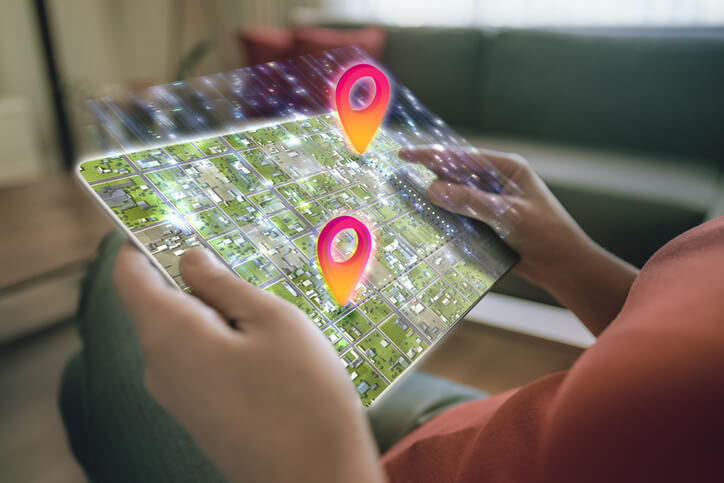Today’s digital world is noisy and cluttered, making it difficult for your message to stand out.
And with the average person being exposed to 4,000 to 10,000 ads per day, you can’t afford to take a one-size-fits-all approach.
This is where audience segmentation comes into play—a powerful strategy that divides your target audience into groups, allowing for personalized and targeted marketing efforts.
In this article, we explore what audience segment is, the benefits it provides, the types of audience segments you can leverage, and more.
What is Audience Segmentation?
Audience segmentation divides your target audience into groups based on specific characteristics, preferences, and behaviors. Segmentation helps you better understand your customers and personalize your communications with different subsets with common traits or interests. As a result, you can improve your targeting and increase engagement.
Why is Audience Segmentation Important?
Audience segmentation acknowledges the unique needs and preferences of your customers, so you can deliver more relevant, engaging content.
Imagine you are a retailer who sells pet food and pet care accessories for furry, feathery, and scaly animals. A large portion of your customers own a dog, but there is a subset of your customers who only keep fish. These aquarium enthusiasts regularly come to your store and visit your website to check for deals on aquarium supplies and fish food. Their purchase history is solely comprised of purchases related to fishkeeping and aquarium maintenance. They have not indicated any interest in your products for dogs or other types of pets.
Now, does it make sense to email them about your new dog beds? Or the latest deal on dog food?
Nope.
This is a great example of why audience segmentation matters. You need to segment your customers to personalize their experience with your brand. Otherwise, your messages start getting ignored and your KPIs suffer as a result.
5 Benefits of Audience Segmentation
Audience segmentation is a must-have for your marketing strategy and offers several benefits.
1. Improved Personalized Marketing
Audience segmentation allows you to create personalized and targeted messages that resonate with each group’s specific needs, interests, and preferences. This increases the chances of capturing their attention and driving engagement.
2. Better Understanding of Your Customers & Prospects
Audience segmentation identifies common traits, behaviors, and preferences within each segment. These insights help you develop marketing strategies that better align with your customers’ needs, leading to higher customer satisfaction and loyalty.
3. Enhanced Marketing Efficiency
With segmentation, you can optimize your resources by focusing on high-potential segments rather than employing a one-size-fits-all approach. By allocating marketing budgets and efforts strategically, you can maximize your return on investment (ROI) and achieve better outcomes.
4. Higher Conversion Rates
Audience segmentation personalizes your marketing, increasing the chances of converting prospects into customers. With segmentation, you can address unique pain points, desires, and motivations, enabling you to deliver more enticing offers and experiences.
5. Increased Customer Retention
Segmentation considers your customers’ varying needs and preferences, helping you send relevant information and offers. This makes them look forward to your messages and keeps them engaged.
6 Audience Segmentation Types + Examples
There are various types of audience segments that you can leverage based on different criteria. Here are some commonly used audience segmentation types and examples of how to use them to improve your marketing KPIs.
1. Demographic Segmentation

Demographic segmentation divides your audience based on demographic variables such as age, gender, income, occupation, education, marital status, and ethnicity.
Example of How to Use Demographic Segmentation
You work for a company that sells luxury skincare products. You could use demographic segmentation to divide customers into three age groups:
- Millennials (18-34 years)
- Generation X (35-54 years)
- Baby boomers (55+ years)
Each group may have distinct skincare concerns and preferences. For example, millennials might be more interested in products that address acne or provide a youthful appearance, while baby boomers may focus on anti-aging and firming products.
2. Psychographic Segmentation

Psychographic segmentation focuses on the psychological and lifestyle aspects of the audience. It categorizes individuals based on their attitudes, interests, values, opinions, behaviors, and lifestyles.
Example of How to Use Psychographic Segmentation
You work for a company that sells outdoor adventure gear and equipment. You could use psychographic segmentation to target different personality traits and lifestyle preferences within your customer base.
Adventure enthusiasts: This segment comprises individuals who seek thrilling outdoor experiences, such as hiking, rock climbing, and camping. These consumers value excitement, challenge, and adrenaline. Create marketing messages that emphasize the ruggedness, durability, and performance of your gear to appeal to this segment. You may also use imagery and language that evokes a sense of adventure and exploration.
Nature lovers: This segment has a deep appreciation for nature and prefers more easy-going outdoor activities like bird-watching, nature walks, and photography. These consumers may also value sustainability and eco-friendly practices. Target this segment by promoting your environmentally conscious materials and highlighting gear suitable for capturing moments in nature.
Fitness enthusiasts: This segment is passionate about fitness and engages in activities like running, cycling, and fitness training. Functionality, performance, and comfort matter most to them. Create personalized messaging to highlight gear that enhances performance, supports physical activity, and provides comfort during workouts.
3. Behavioral Segmentation

Behavioral segmentation categorizes your audience based on their actual behaviors, such as purchasing history, product usage, brand loyalty, engagement with marketing channels, and response to promotions.
Example of How to Use Behavioral Segmentation
You work for a retail clothing store and can utilize behavioral segmentation based on customers’ purchase history to target different segments with tailored marketing strategies.
High-Value Customers: These customers have consistently made large purchases or have a history of frequent purchases. You can identify this segment by analyzing the total amount spent by each customer over a specified period. Target these customers with exclusive rewards, VIP discounts, or personalized shopping experiences. You can also send targeted emails or notifications about new arrivals or limited-time offers to incentivize repeat purchases and foster loyalty.
Occasional Shoppers: These customers make infrequent purchases or have a sporadic shopping pattern. Identify this segment by analyzing the gaps between purchases made by each customer. To encourage more frequent purchases, send targeted promotional offers, such as limited-time discounts, free shipping, or personalized recommendations based on past purchases. You can also leverage remarketing techniques, such as displaying relevant ads or sending reminder emails, to keep the brand top-of-mind for these customers.
Seasonal Shoppers: These customers exhibit a pattern of purchasing specific items during certain seasons or occasions. Identify this segment by analyzing the types of products purchased during different times of the year. To cater to these customers, create targeted campaigns and promotions related to seasonal events, holidays, or specific product categories. You can also send personalized recommendations or reminders based on past seasonal purchases to capitalize on their seasonal buying behavior.
4. Geographic Segmentation

Geographic segmentation divides your audience based on their location, such as state, city, or even neighborhood, which helps you tailor your messages and offerings based on the specific needs and preferences of consumers in different locations.
Example of How to Use Geographic Segmentation
You work for a national insurance company that wants to target different regions based on unique insurance needs and risk factors. You can use geographic segmentation to tailor insurance offerings and marketing strategies accordingly.
Coastal Regions: Coastlines are prone to natural disasters like hurricanes or flooding. Reach this segment with insurance policies specifically designed to cover damages caused by such events and offer additional coverage options for coastal properties.
Urban Areas: Urban areas often have higher crime rates. Offer this segment insurance packages that provide comprehensive coverage for personal belongings and offer additional features such as identity theft protection or coverage for electronic devices.
Rural Areas: Offer specialized coverage for farming equipment, livestock, or agricultural properties to this segment. You can tailor your offerings to address risks related to rural living, such as farm accidents, crop damage, or animal liability.
5. In-Market Segmentation

In-market segmentation focuses on the immediate needs and intentions of potential customers. By using various data sources, such as online browsing behavior, social media interactions, purchase history, and intent signals, you can identify consumers who exhibit clear indications of purchase intent.
Example of How to Use In-Market Segmentation
You work for a car dealership that wants to target individuals who are actively in the market to purchase a new vehicle. You can use in-market segmentation to identify and engage with potential customers who are showing clear signals of purchase intent.
Online Browsing Behavior: Work with a reputable audience provider to identify consumers who are actively researching and comparing different car models. By analyzing browsing behavior related to car specifications, pricing, and reviews, you can identify individuals who are in-market for a new vehicle.
Purchase History and Intent Signals: Work with a reliable audience provider to use customer data and intent signals, such as individuals who have recently sold or traded in their existing vehicle or have previously visited your dealership for a test drive.
6. Life Event Segmentation

Life event segmentation targets consumers based on significant life events or milestones they’re experiencing. These life events can include major personal transitions such as moving to a new home, getting married, having a baby, graduating from college, or retiring.
Example of How to Use Life Event Segmentation
You work for a furniture and home decor retailer that needs to target consumers who are moving to a new home. PGM has proprietary mover segments to ensure your brand reaches new movers before your competition.
Verified Pre-Movers: Reaching new movers before they move keeps your brand on their radar for when they’re ready to make a purchase decision. These individuals are homeowners who are about 2-6 weeks out from completing their move and have a house under contract or are in the inspection, moving, or financing process. This segment is actively researching and shopping for new goods and services. Reach this segment across online and offline channels and offer them a special discount or promotion.
Post-Movers: This segment is comprised of homeowners and renters who have completed their move. This valuable shopping period lasts for at least 1 to 12 months post-move. Utilize an omnichannel marketing approach during this stage of the moving journey to keep your brand top of mind and drive sales.
It’s important to note that these segmentation types are not mutually exclusive, and it’s best to combine multiple approaches to gain a comprehensive understanding of your target audience and develop effective marketing strategies. With PGM’s rich consumer insights, you can create custom blended audience segments for more precisely targeted campaigns. Learn more about how we can help you build high-performing audience segments.
How Many Segments Should I Target?
When determining segments to target, rely on a multifaceted approach. You don’t want to rely on any one segment alone, but you also don’t want to over-segment. Assess the diversity within your target audience, looking at demographic, psychographic, and behavioral characteristics to identify distinct groups with unique needs and preferences.
Evaluate the size and growth potential of each segment, prioritizing those with substantial market share and promising growth trajectories. Consider the competitiveness of each segment, weighing the intensity of competition and your ability to differentiate your offerings effectively.
Finally, factor in your capabilities and resources, ensuring you can effectively serve and cater to the needs of each segment without spreading yourself too thin.





